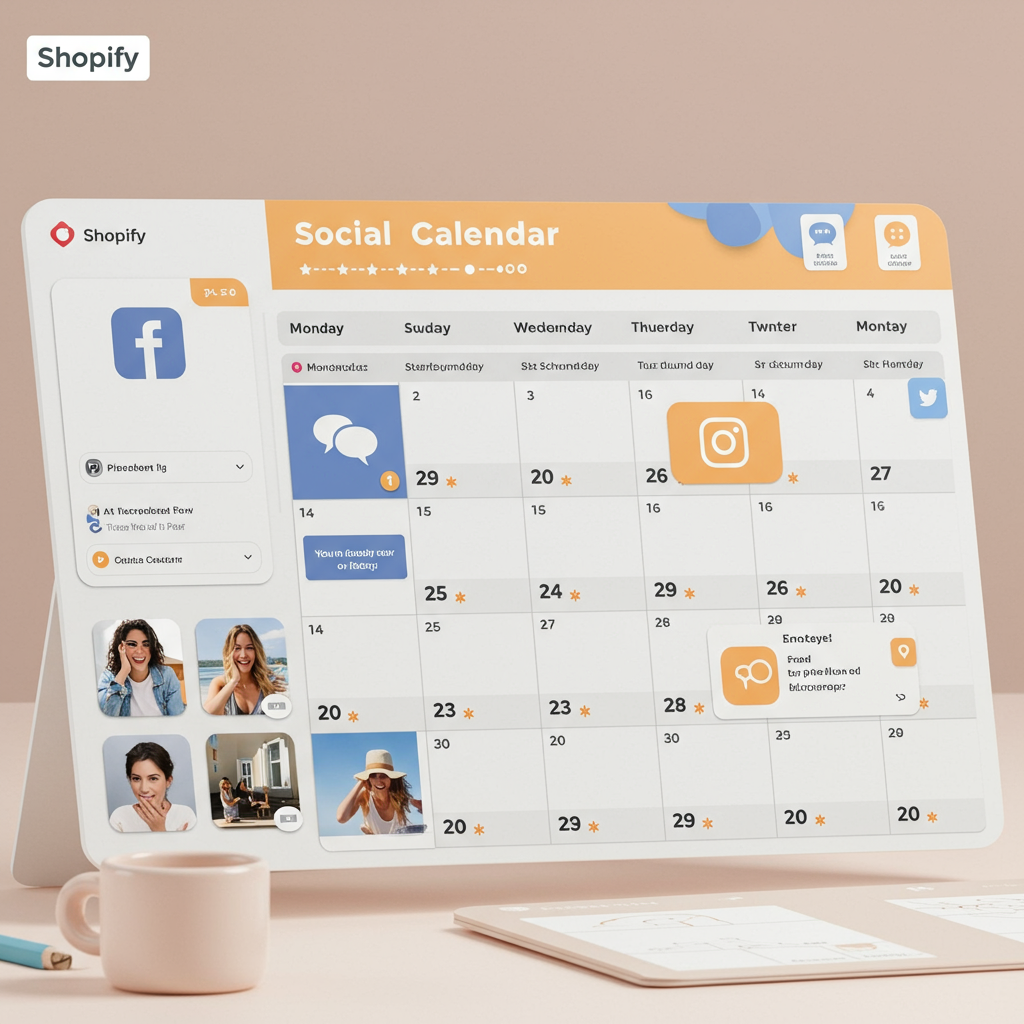Transforming sporadic posts into a powerful, consistent strategy for your online store.
As a Shopify merchant, you know the hustle. You’re managing inventory, fulfilling orders, optimizing your store, and constantly thinking about how to reach more customers.
Amidst all this, social media often feels like another chore, a sporadic effort squeezed in between more pressing tasks.
But what if I told you there’s a way to transform your social media presence from a chaotic scramble into a streamlined, powerful marketing engine?
The secret, my friends, lies in a well-structured social media marketing calendar. It’s not just a fancy planner; it’s your strategic roadmap to online success.
Today, I want to walk you through why a social media calendar is absolutely essential for your Shopify store and how you can create one that truly works for you.
First off, let’s talk about consistency. In the ever-noisy world of social media, consistency is king. A calendar ensures you’re showing up regularly, keeping your brand top-of-mind for your audience.
It saves you precious time. Instead of wondering what to post each day, you’ll have a clear plan, allowing you to batch content creation and scheduling.
A calendar forces you to be strategic. You’ll plan campaigns, promotions, and product launches well in advance, aligning your social efforts with your business goals.
It helps with tracking and analysis. When you plan, you can easily see what content performs best, allowing you to refine your strategy over time.
And perhaps most importantly, it prevents burnout. No more last-minute panic posts or feeling overwhelmed by the constant demand for new content.
So, what exactly goes into a robust social media marketing calendar for a Shopify store? Let’s break down the key components.
At a minimum, your calendar should include: the Date, the Social Media Platform (e.g., Instagram, Facebook, TikTok, Pinterest), the Content Type (e.g., image, video, Reel, Story, carousel, live), and the specific Caption or text.
You’ll also want to note the Visuals required (e.g., specific product photo, lifestyle shot, graphic), any relevant Links (e.g., direct product link, blog post), and the Hashtags you plan to use.
Don’t forget the Call to Action (CTA) – what do you want people to do after seeing your post? (e.g., “Shop Now,” “Learn More,” “Link in Bio”). A Status column (e.g., Draft, Ready, Scheduled, Posted) is also incredibly helpful.
Now, let’s get to the “how-to.” Creating your calendar might seem daunting, but I promise it’s manageable if you follow these steps.
Step 1: Define Your Goals. What do you want to achieve with social media? Brand awareness, driving traffic to your Shopify store, increasing sales, building community? Be specific.
Step 2: Know Your Audience. Who are you trying to reach? What platforms do they use? What kind of content do they engage with? Your customer insights from Shopify analytics can be invaluable here.
Step 3: Choose Your Platforms. You don’t need to be everywhere. Focus on the platforms where your target audience spends most of their time and where your products can shine.
Step 4: Brainstorm Content Pillars. These are broad categories of content that align with your brand and goals. Examples include: Product Spotlights, Behind-the-Scenes, Customer Testimonials, Educational Content, Promotions/Sales, Holiday-themed posts.
Step 5: Research Key Dates and Trends. Look at upcoming holidays, seasonal events, industry trends, and even relevant pop culture moments. Integrate these into your calendar.
Step 6: Select Your Tool. You can start simple with a Google Sheet or Excel spreadsheet. For more advanced features, consider dedicated tools like Hootsuite, Buffer, Trello, Asana, or even a specialized social media calendar tool.
Step 7: Populate Your Calendar. Start filling in the blanks. Plan your content weekly or monthly. Mix up your content types and pillars to keep your feed engaging.
Step 8: Create Your Content. Once your calendar is planned, you can batch create your visuals and write your captions. This is where the time-saving really kicks in!
Step 9: Schedule and Publish. Use native scheduling tools on platforms or your chosen third-party tool to automate posting.
Step 10: Analyze and Adjust. After your content goes live, use the analytics provided by each platform and your Shopify store to see what resonated. Learn from your data and refine your strategy for the next month.
A few extra tips for success: Be flexible – sometimes trends emerge, and you’ll want to jump on them. Engage with your audience – social media is a two-way street.
Don’t be afraid to repurpose content across platforms, adapting it for each. Test different posting times to find out when your audience is most active.
For Shopify merchants specifically, remember to always link directly to your products when appropriate. Utilize Shopify’s social selling channels and apps to streamline the process.
A social media marketing calendar isn’t just a tool; it’s an investment in your brand’s visibility and growth. It empowers you to be proactive, not reactive, with your online presence.
By implementing these steps, you’ll transform your social media from a burden into a powerful asset that consistently drives traffic and sales to your Shopify store.
What do you think about this approach to social media planning? I’d love to hear your thoughts!






